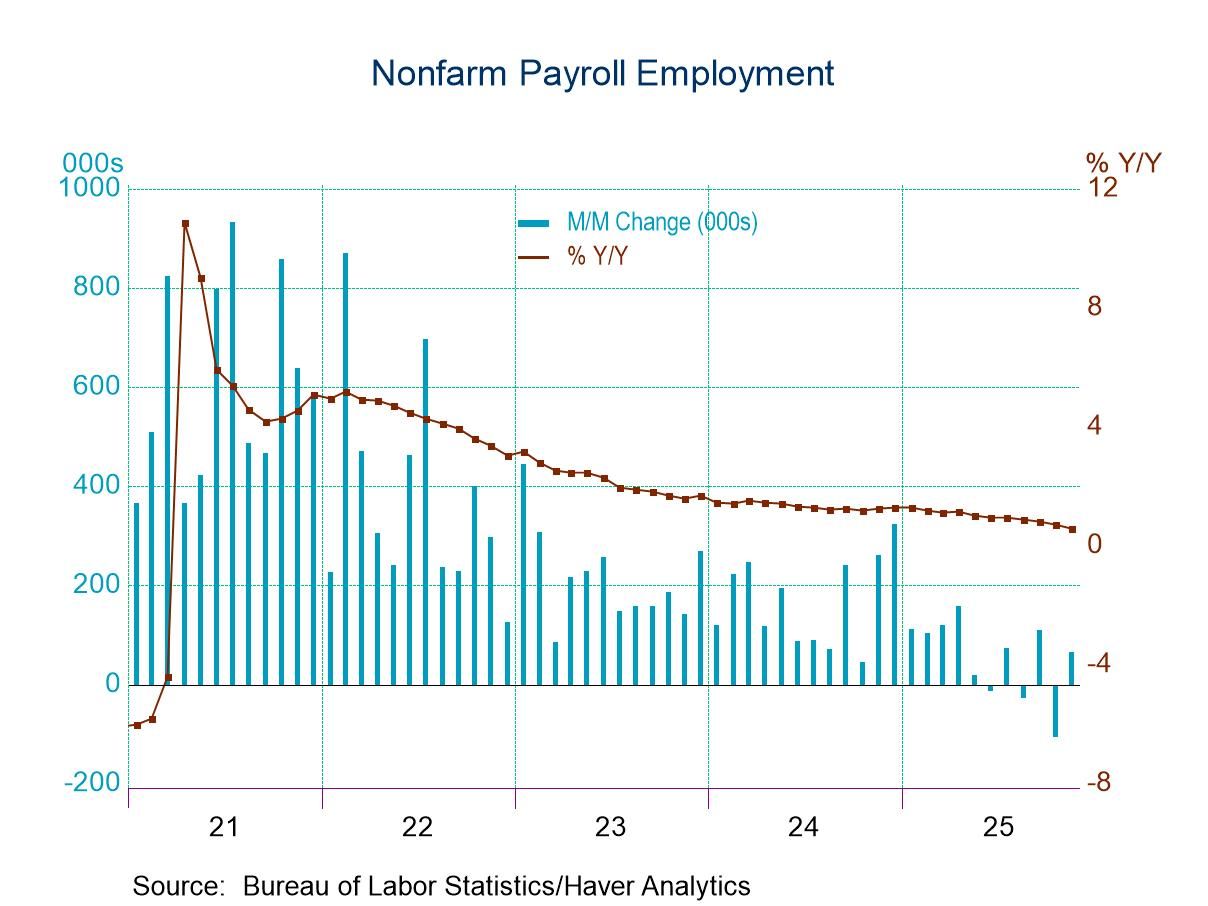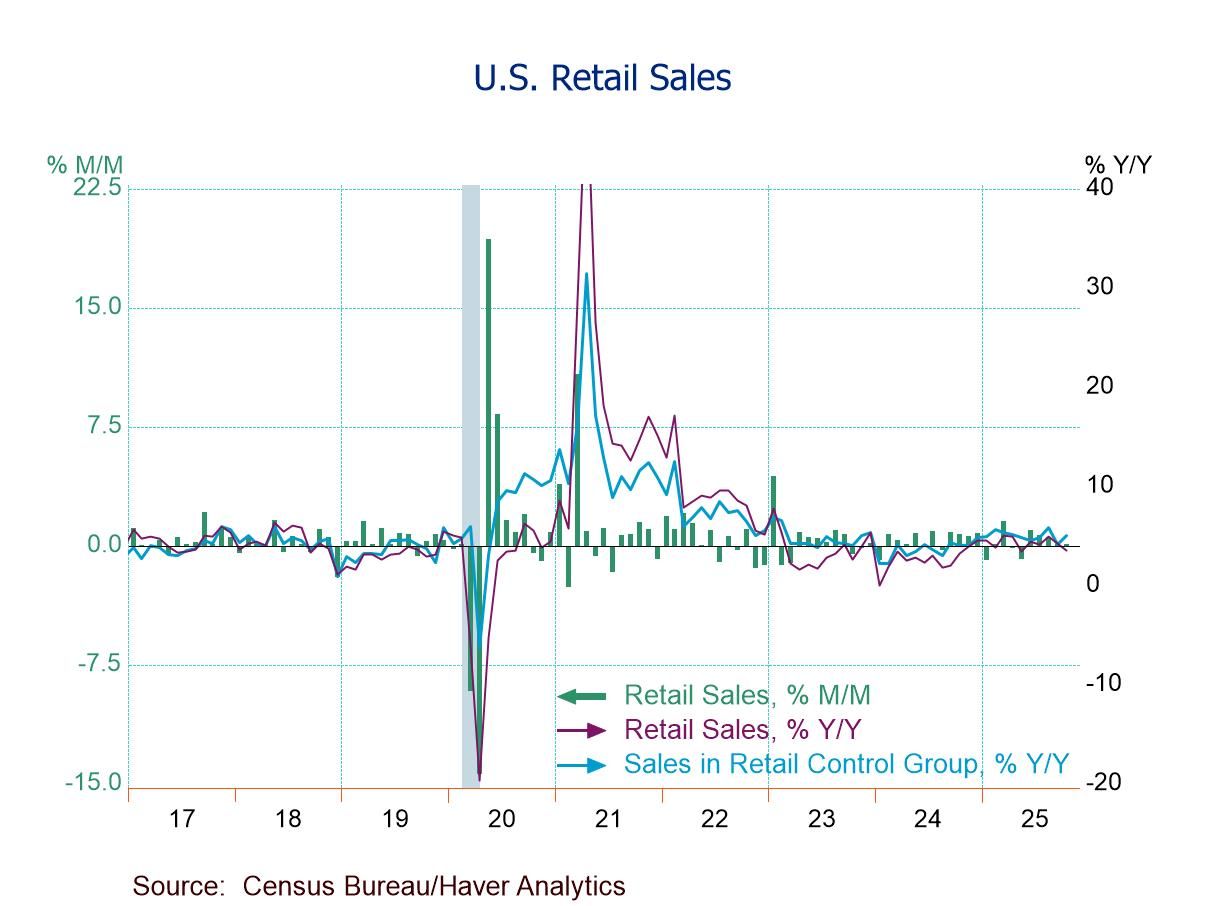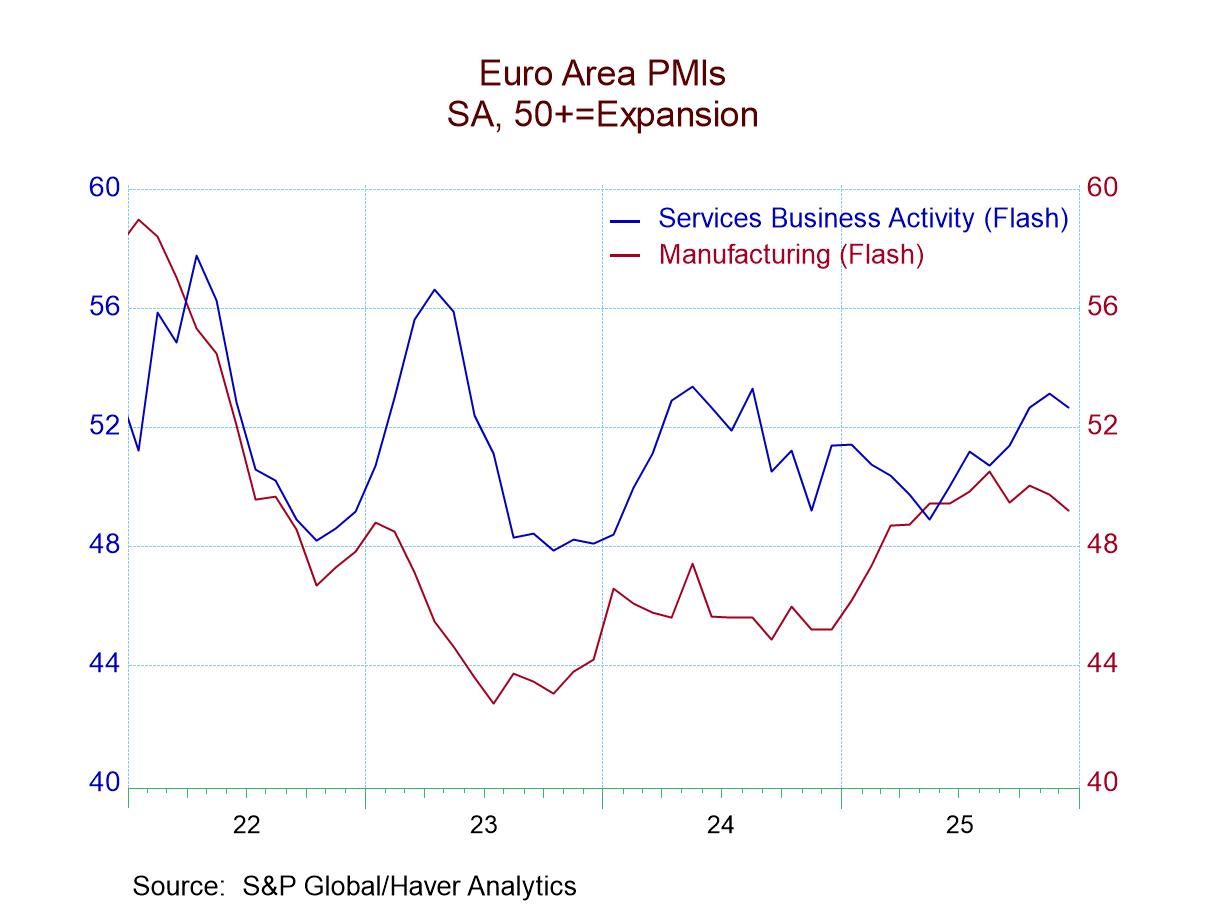U.S. Wholesalers See Moderate Increases in December Inventories and Sales
Summary
- Wholesale inventories have first increase since November 2022.
- December sales were up 0.7%.
- The I/S ratio held steady.


Wholesale inventories rose 0.4% seasonally adjusted in December, their first outright increase since November 2022. Thus, for all of 2023, wholesale inventories dropped 2.7%; this contrasts to a 17.2% increase across 2022. For the December amount the Informa Global Markets Survey did anticipate a 0.4% rise.
In December, durable goods wholesalers saw a 0.6% (1.0% y/y) increase in their inventories, which followed a decrease of 0.3% in November. Motor vehicles and parts had the largest December increase, up 2.9% (10.8% y/y), with professional and commercial equipment also up noticeably, 1.6% (-3.3% y/y), although that category does include computers and associated equipment, in which inventories climbed 3.8% (-5.4% y/y). Other increases were in machinery, 1.3% (14.3% y/y), electrical & electronic goods, up 0.2% (-4.7% y/y), and lumber, up 0.1% (-9.9% y/y). Inventories declined at furniture & home furnishing wholesaler, -1.3% (-14.7% y/y), -1.3% (-14.7% y/y) metal & minerals, -0.5% (-6.2% y/y) and hardware, heating & plumbing supplies, -0.4% (-7.2% y/y).
Among nondurable goods wholesales, inventories eased just 0.1% in December, but were down 8.1% across the whole year of 2023. Drugs and druggist supplies had the largest increase, 2.0% (4.4% y/y); paper & products were next with a 1.2% December increases (-15.5% y/y), followed by grocery products, 0.8% (-4.8% y/y) and beer, wine & alcohol beverages, 0.2% (-2.6% y/y). There were December declines in inventories of petroleum & products, -6.7% (-19.0% y/y), farm product raw materials, -4.4% (-26.5% y/y), apparel and associated items, -1.4% (-22.9% y/y) and chemicals & products, -0.3% (-14.4% y/y).
Wholesale sales of merchandise rose 0.7% (1.6% y/y) in December. This was somewhat stronger than the Action Economics Forecast Survey, in which participants expected a 0.4% increase. The y/y increase was the largest since January 2023.
In December, durable good wholesalers saw a 1.0% increase in sales (1.6% y/y) although motor vehicle & parts did have a decline of 2.8% (3.4% y/y). Other reported sectors all had increases, especially furniture & home furnishings, 4.2% (4.0% y/y), metals & minerals, 2.9% (-3.8% y/y), electrical & electronic goods, 1.9% (1.8% y/y), machinery & supplies, 1.2% (1.7% y/y) and lumber & construction materials, also 1.2% (-3.6% y/y). There were more modest increases in hardware and plumbing equipment, 0.6% (-1.5% y/y) and professional & business equipment, 0.5% (0.6% y/y). This last included a decline in computers & equipment, -1.0% (-4.4% y/y).
Among nondurable goods wholesalers, the total rose 0.5% in December (1.6% y/y); this total included two sectors with notable decline, especially petroleum & products, 1.8% (-0.3% y/y), and alcohol, -3.7% in the month (-0.1% y/y). The strongest increases were in groceries & related, 2.0% (0.7% y/y) and drugs & supplies, 1.7% (15.6% y/y). Paper & product sales rose 0.5% in December (-5.9% y/y) and apparel & notions rose 0.4% in the month (-7.8% y/y). Sales of the farm product raw materials and chemical industries both increased marginally at 0.1%; farm products had a 16.0% drop in the year, while chemicals had a 2.8% decrease in the year.
The wholesale inventory/sales ratio (I/S) was 1.34 in December, the same as in November and down marginally from 1.35 in October. For durable goods, the I/S ratio was 1.81 in December, down from 1.82 in November. For nondurable goods, the ratio was 0.93 in December, the third straight reading of that amount.
The wholesale trade figures are compiled by the U.S. Census Bureau and are available in Haver’s USECON database. The expectations figure for total inventories is contained in the MMSAMER database, and the sales expectations figure is in the AS1REPNA database.


Carol Stone, CBE
AuthorMore in Author Profile »Carol Stone, CBE came to Haver Analytics in 2003 following more than 35 years as a financial market economist at major Wall Street financial institutions, most especially Merrill Lynch and Nomura Securities. She had broad experience in analysis and forecasting of flow-of-funds accounts, the federal budget and Federal Reserve operations. At Nomura Securities, among other duties, she developed various indicator forecasting tools and edited a daily global publication produced in London and New York for readers in Tokyo. At Haver Analytics, Carol was a member of the Research Department, aiding database managers with research and documentation efforts, as well as posting commentary on select economic reports. In addition, she conducted Ways-of-the-World, a blog on economic issues for an Episcopal-Church-affiliated website, The Geranium Farm. During her career, Carol served as an officer of the Money Marketeers and the Downtown Economists Club. She had a PhD from NYU's Stern School of Business. She lived in Brooklyn, New York, and had a weekend home on Long Island.





